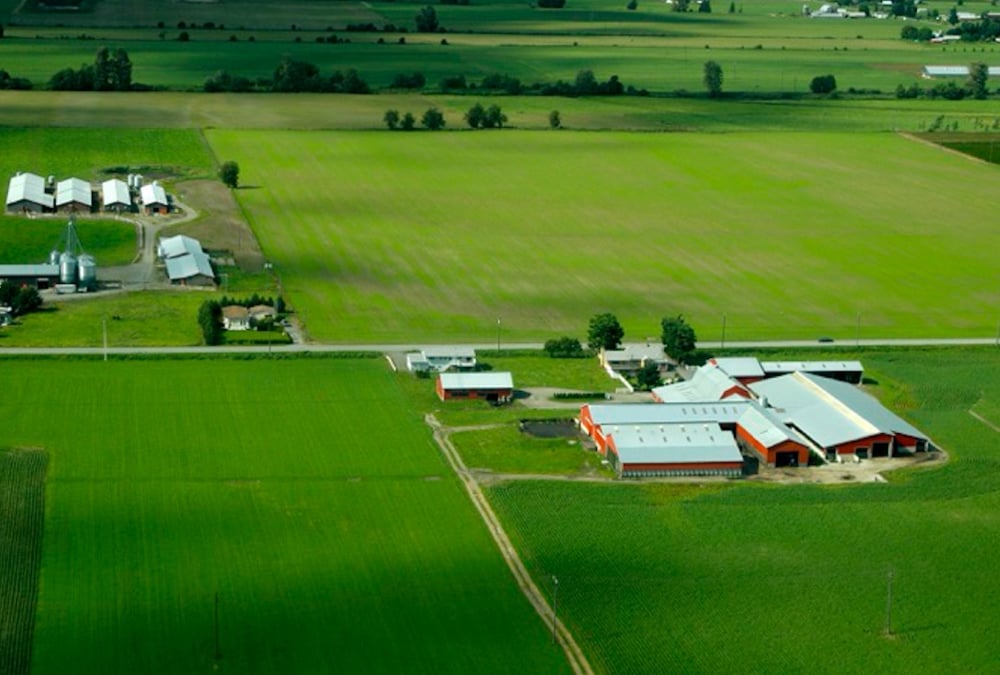Investing in high-speed rail corridors to save Canada’s farmland and solve its housing shortage

A long-time advocate for protecting Canada’s farmland thinks governments should use the sovereignty crisis to invest in high-speed rail corridors to keep prime acres in food production while simultaneously addressing the country’s housing shortage.
Why it matters: The threat to Canada’s sovereignty from the Trump administration in the United States has brought Canada’s challenges into sharp focus – but it’s also prompted an outpouring of original thinking about solutions.
Most of Canada’s top food producing lands lie in areas of the country that are prime targets for housing developments, such as the Greater Toronto Area, says Don Lobb, an Ontario farmer who has worked tirelessly to promote soil conservation.
Read Also
Waving the flag not enough to keep rural business afloat
It is up to Canadians to show up as often as possible and shop at local businesses. This act will encourage other small businesses and help rebuild rural communities.
“It’s only when there’s an emergency or people feel threatened that they accept change. And so this may be a time of real opportunity. I think we need to look at it that way,” he said in an interview at his home in Rockwood, Ont.
Canada has accomplished big projects in the past, he says. The much of the Canadian transcontintel railway was built quickly during the 1880’s, including sourcing some parts from around the world.
Canada needs to be on a war footing he says, which means the need to enhance military capacity and upgrade and build new ports, pipelines and highways that work to move goods as efficiently as possible.
He also says it’s time to get serious about building high-speed rail and whisking people at three times the speed of current railways will open new growth in what are now considered remote population centres, especially in Ontario.
Lobb’s main goal is to get people settling outside of southern Ontario and in areas where farmland is less productive or non-existent.
He’s identified Brockville (1.5 hours away from downtown Toronto on a 300 km/h high-speed rail line), Sault Ste. Marie (2.5 hours at 300 km/h) and Thunder Bay (4.75 hours at 300 km/h) as the main nodes. Communities between those communities and the Greater Toronto Area (GTA) would also see growth. Rarely do high-speed trains maintain the 300 km/h rate for the whole trip, so these are rough numbers, but Lobb’s point is that people could still make it to Toronto for a meeting, a baseball game or a family event.
He also anticipates that there would be population growth in other communities along the high-speed rail lines. He also advocates putting a line to Kapuskasing, to help open up the north.
“We have to develop areas that are closer to some of the resources that we need to find ways to market now. There are some real opportunities there, because that would put people closer to some of the recreation areas that they value,” he says.
People want a home they can afford, good jobs and recreation opportunities. These areas would give people the opportunity to buy homes at lower prices than the GTA, access to resource jobs and some great recreation opportunities with Brockville, Sault Ste. Marie and Thunder Bay all located on the Great Lakes water system.
High-speed rail could also be installed across the country, connecting cities in Western Canada. The Thunder Bay line would continue to Winnipeg.
“The quality of life is important to most people. And by getting away from that GTA pressure, we have that opportunity,” he said.
Expanding population outside of southern Ontario would help preserve farmland for food production, backed by a Foodland Protection Bill. Economic drivers beyond agriculture should be evaluated based on the impact on the food production system.
Lobb has long been a proponent of the concept that soil productivity determines the standard of living as it is critical to the price of food, the first priority of life, and underpins social, economic and ultimately political security.
He’s also an advocate that any agriculture supports be conditional on soil protection and care.
Economists haven’t built the costs of soil degradation into farm operation budgets, he says.
“If you build in off-farm and on-farm costs of soil degradation, it changes the equation a whole lot.”
Some of Lobb’s other ideas looked at managing highways for maximum throughput, limiting foreign ownership of Canadian assets, creating a work program for unemployed Canadians, surface water management, social responsibility and education.
Lobb has had a long career in farming and advocating for farmers and soil health. He says he’s never seen Canada at the risk it is now.
“What I’ve offered here is, I hope, something to stimulate some thought as to the kind of things that we could be doing.”
Source: Farmtario.com


